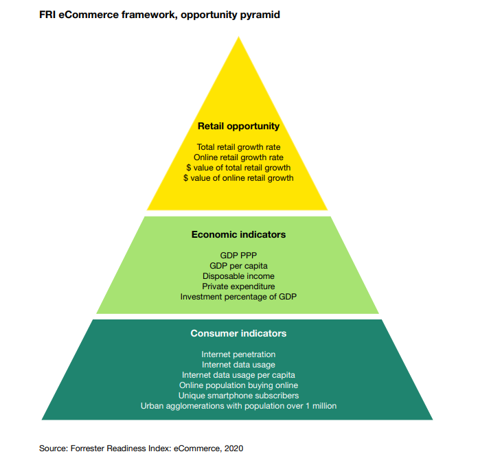
Global consumers’ appetite for imported goods is increasing as our world continues to get smaller. However, in the quest to create a seamless ordering and shipping experience to acquire new global customers, companies often squander opportunities to capitalize on another touchpoint—the post-purchase experience, from tracking to returns.
One key mistake organizations make is assuming that “one size fits all” in terms of global preferences. Metapack’s fourth annual Global eCommerce Consumer Research Report uncovered some fascinating differences in delivery expectations from consumers in 11 countries that can help companies identify inventive ways to create an exceptional post-purchase experience at a global scale.
A Key Post-Purchase Touchpoint: Returns Matter
A number of findings revolved around the return process, an ongoing challenge to brands and retailers as they work to meet consumers’ cost expectations, while offering the best experience possible. But it’s an area that can make a big difference in brand perception—in fact, the Metapack study found that 70% of shoppers look at an eCommerce website’s return policy before they complete an online purchase, and nearly half of those say the return policy has deterred them from shopping.
Reframing the view of returns from a nuisance to an opportunity allows brands to surprise and delight their customers, thus retaining them and prompting repeat business. “Retailers should take any chance they can to connect with consumers as brand loyalty continues to erode, especially among younger generations, and a solid return process can make a difference,” says Perry Kramer, senior vice president at retail consulting firm BRP.
Three Trends in Returns
Wondering how you can make your return policy a positive point of differentiation? Here are three trends in global returns the Metapack survey identified that brands can use to their advantage.
1. Consumers buy multiples of the same item, expecting to return.
No longer will a consumer order a pair of jeans in one size, try them on and then return them for the next size if needed. Today they’re more apt to simulate the experience of shopping in a brick-and-mortar store by ordering a variety of sizes and styles to see what works best.
Brands tend to label this as bad consumer behavior that’s costing them, but instead they should realize that returns are just a fact of life, says Duncan Licence, vice president of global product at Metapack. “While returns will always be a feature of eCommerce, the trick is figuring out how to use the tools at a retailer’s disposal to reduce returns and to remove friction from the customer experience.”
That means investing in your sizing, product descriptions and technology to help the customer feel more confident in buying fewer items, and then using return-trend data to help you spot gaps. In addition to strengthening upfront processes to encourage more specific ordering, brands should make the return process as easy as possible to hasten consumers’ actions.
“The pattern of buying multiples can tie up huge amounts of inventory so the simpler you can make the return process, the more likely customers are to complete it quickly, thus allowing you to sell more of your merchandise at the right time and place,” Kramer says.
2. Consumers want to return their items in a way that accommodates them.
Today’s consumers seek a flexible return process that offers them choice and convenience, but naturally that means different things to different people, Licence says.
For example, including a return label in every box can be a wasted effort for a consumer who prefers a drop-off point, which is common with roughly half of customers in Europe, he notes. And while a drop-off locker is convenient for someone who walks by it every day in a city, a customer in a rural area might wish to have parcels collected from home.
“All of these options are valid in different situations. Retailers need to study what works in various markets and segments of consumers and adapt their processes,” Licence says.
However, it can be prohibitively expensive for a brand to build and manage the capability to meet these disparate needs and experiment with varied approaches—especially since the return process rarely is considered a priority in terms of investment as compared with sales initiatives. That’s where a third-party like Metapack can step in to supply straightforward technology that brands can configure to their needs.
3. Consumers will buy more if the return process is easy.
Returns are a double-edged sword—a hassle for retailers, but a key driver of customer loyalty. In fact, Metapack’s survey found nearly 60% of consumers would be more likely to shop with retailers or brands that offered a seamless return experience.
“Most retailers do a great job communicating as merchandise goes out, but a horrible job on the way back,” Kramer says, a situation that can be fixed with better tracking and outreach.
He recommends retailers stay in touch with customers who are likely to be making a return, such as someone who has purchased three of the same skirt in various sizes. “Reaching out to them early on to see if they have questions or need help with the process might spur them to get the merchandise back to you that much faster.” Later in the cycle, they’ll appreciate it if you remind them as they near the return window so they don’t miss out.
Another great way to incent customers to buy more is to refund their money faster when they make a return, Licence says. “We especially see this with our fast fashion retailers who are serving a demographic who want something new all the time but are cash poor and need that refund to make their next purchase.”
Finally, Licence points out that the bar is constantly being raised. “Consumers’ expectations never go down, and what today is a competitive differentiator might be table stakes tomorrow. Brands must experiment and tailor their processes to help returns become a point of differentiation that can help their business strategy.”

